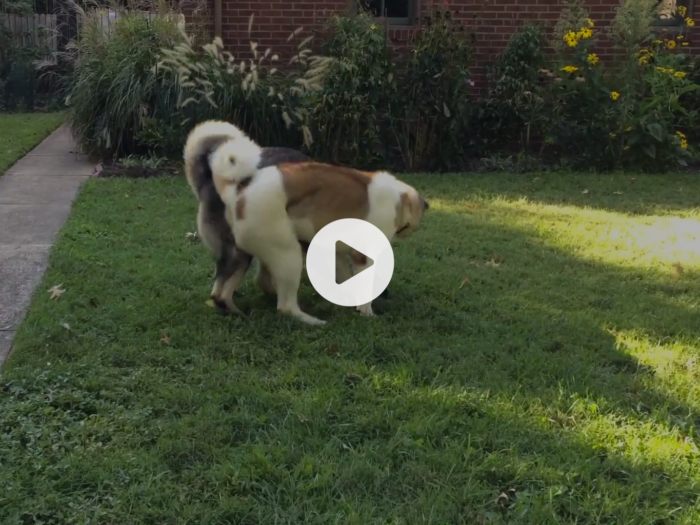We’ve all seen it – intense behavior between dogs. Is it play? Fighting? Something in between? Here’s an example of two male Akitas having a go at each other. Can you tell if their antics are happy or hostile? They look fierce, and their energy level is daunting. They’re moving at top speed, and their body slams are certainly rude. Believe it or not, these guys are playing!
- They are showing good give-and-take. Sometimes one chases, sometimes the other.
- Their bodies are curvy, not rigid.
- They both pause between jousts.
- Their tails are relaxed, not tight.
- Their mouths are wide open and relaxed – there are no hard bites.
- That belly-up move? It’s a form of self-handicapping. The dog taking that pose is allowing the other dog access to his tummy – he’s saying, “I’m not worried about you.”
If you didn’t read this situation correctly, you’re not alone. It’s just as hard to understand what’s going on when two quiet, normally friendly dogs suddenly lunge at each other. We humans often don’t see the signals until it’s too late because they’re quick and small. The dogs see them, though.
The biggest mistake we make is in assuming that two dogs will play well with each other because they’re friendly to us, and – well – we think they should. We humans love to socialize with others, and think it should be fun for our dogs too. Many adult dogs just don’t want to play with other dogs. And when they do, they choose their own friends, just as we do. Next time you’re considering a play opportunity for your friend, remember:
- Dogs play by their own rules, not ours.
- It’s best to be cautious when choosing play situations for your dog – especially dog parks and play groups. Does your dog know – and like – all the animals and their people? Is there qualified human supervision, with no scary punishments (like corrections or squirt bottles)?
- It’s very important for you to learn your dog’s body language so you can avoid uncomfortable or dangerous social situations. He’ll be safer, and you’ll both have a better time.
Spry Dog can help you understand your dog’s body language. For more information, contact us: info@spry.dog


Sorry, comments are closed for this post.